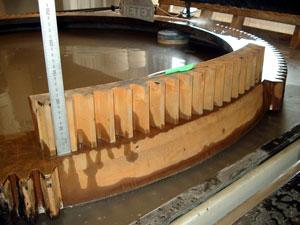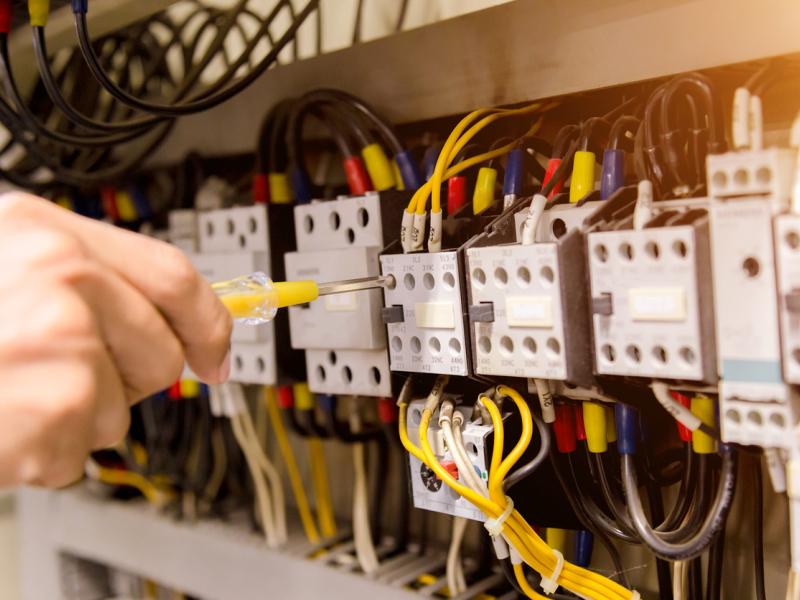|
THE question most asked by customers about abrasive jet machining is “Will it be more cost effective than other profile cutting methods?” The answer is: choice is good – understand how to make the most of all the profile cutting methods on offer to you. Knowing which cutting method – waterjet, laser, plasma or electrical discharge machining (EDM) – to use for a particular application, is one of the keys to producing cost effective parts for manufacturing. While waterjet cutting is perceived as competing with laser, plasma, and EDM, many shops use more than one of these processes and view them as complementary to each other. Laser cutting In general, lasers are designed for cutting mild steel and stainless from 0.5mm to 16mm, and aluminium to 12mm. While lasers have traditionally been used primarily for sheet metal cutting, they are increasingly being used for cutting greater thicknesses of stainless steel and aluminium. However, cutting thick materials requires powerful lasers and can require secondary operations to remove the heat-affected zone (HAZ). New high-power lasers (3 to 6kW) can be tuned down to cut thin material with a precision equal to that of a lower-powered laser. If a shop is cutting only mild steel sheet metal parts in medium to large batch sizes, a laser may be the best choice. However, a gray area occurs with materials from about 16mm to 25mm thick. The waterjet becomes more viable for thicker materials. Waterjets are usually the most productive method of cutting thicker aluminium. Titanium, nickel alloys, copper, brass, glass, and stone can also be cut productively with a waterjet. The waterjet’s quick setup time makes it suitable for small to medium batch runs. The part geometry, batch size, and material type must be considered before the cutting method is chosen. Plasma cutting Plasma cutting is a good choice for cutting mild steel between 5mm and 40mm thick when the HAZ does not need to be removed before the part is used in a final application. If the HAZ is to be removed, hand grinding of the part is required before it can be used in its final application. A majority of the time, plasma is used on mild or carbon steel up to 40mm thick. Beyond this thickness, oxygen acetylene torch cutting can also be used. Plasma cuts at high speeds and generates heat that leaves rough edges. Dross sometimes builds up on the bottom side of the cut. Accuracies are in the range of ±0.75mm to ±1.5mm, depending on the thickness of the material. Kerf width typically is 3mm to 6mm and can be much smaller with precision plasma.
|
EDM Wire electrical discharge machining uses spark erosion to remove material from only electrically conductive materials, the wire being negative and the work piece being positive. Wire EDM is used to cut steels, INCONEL® alloys, carbide, graphite, aluminium, copper, brass, and titanium. EDM is extremely accurate. However, it is slow, up to ten times slower than waterjet cutting. Accuracy is the main difference between EDM and waterjet cutting. EDM is the more accurate process and may be the best choice for applications that require extremely tight tolerances. However, EDM is also limited to cutting only conductive materials. Waterjets cut faster than EDM and can cut non-conductive materials. Kerf width with EDM is smaller than with waterjet: 2mm to 0.3mm compared to 1.27mm to 0.762mm. Waterjet cutting Waterjets use an abrasive water stream to cut material – both metals and non-metals. It can cut metals ranging from thin shim stock to more than 200mm thick with accuracies of ±0.1mm to ±0.5mm. Most waterjets are used to cut material less than 100mm thick. Repeatability is approx ±0.08mm. Thick cutting (more than 100mm) with a waterjet loosens tolerances by at least two times. The same parameter set (water pressure, abrasive flow rate, cutting nozzle, etc) is used for nearly all cutting; only the cut speed varies from material to material. The fact that the parameters usually do not change from one material to another means that setup is fast. Materials most often cut with waterjets are aluminium, stainless steel, and high-strength metals such as titanium, Hastelloy, INCONEL alloys, nickel alloys, composites, and metal laminates. Waterjets are often used to cut short-run prototypes that require minimum tooling or fixturing. They are used for net-shape cutting, in which the final part is produced without the need for secondary operations to achieve required tolerance or surface finish; or for hogging out, in which the abrasive waterjet rough-cuts a part to within about 0.5mm tolerance. It is finished on a milling machine to achieve a tighter tolerance and smoother surface. Article by Glen McCormick of Jetex Waterjet Cutting Limited.
|






